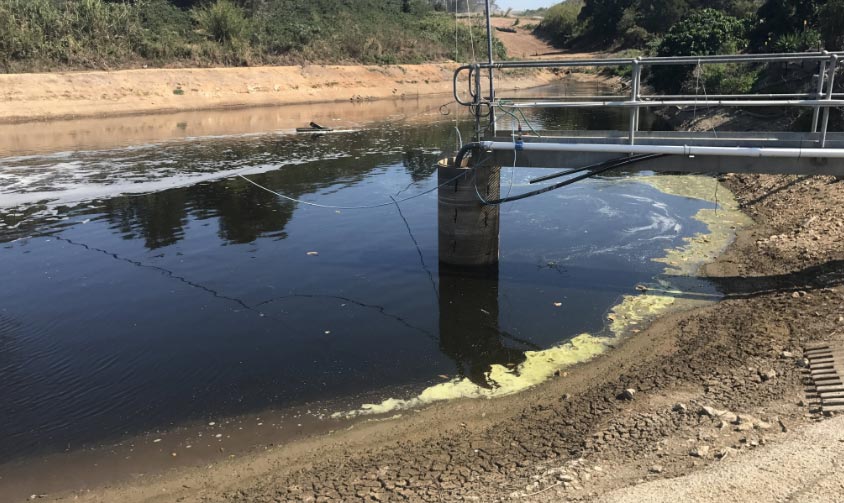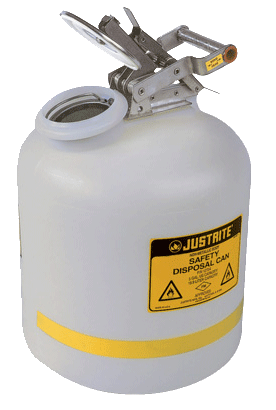Comprehensive Liquid Waste Disposal: Solutions for Houses and Services
Comprehensive Liquid Waste Disposal: Solutions for Houses and Services
Blog Article
Exactly How Fluid Waste Disposal Works: A Thorough Summary of Methods and Technologies Employed

Summary of Liquid Waste Kind
The complexity of fluid waste kinds requires a thorough understanding of their characteristics and ramifications for disposal. Liquid waste can generally be categorized right into a number of types, consisting of commercial, community, farming, and hazardous waste. Each classification shows unique buildings, calling for details management techniques to reduce ecological and health dangers.
Industrial liquid waste stems from making procedures and commonly has a series of impurities, such as hefty steels, solvents, and natural substances. Metropolitan fluid waste, mostly making up wastewater from homes and commercial facilities, includes organic matter, nutrients, and microorganisms (industrial wastewater treatment). Agricultural fluid waste, consisting of runoff from ranches, might contain plant foods, chemicals, and pet waste, positioning dangers to water quality and communities
Unsafe liquid waste is defined by its poisoning, reactivity, or possible to create damage. This group includes substances like acids, bases, and particular chemicals that necessitate rigid handling and disposal protocols. Understanding these diverse fluid waste kinds is important for establishing reliable disposal techniques and making sure conformity with ecological laws. Correct category and characterization are essential for applying appropriate therapy strategies and decreasing the negative effect on public wellness and the atmosphere.
Physical Treatment Techniques

Testing is the initial step, where bigger bits and particles are gotten rid of from the fluid waste making use of screens or grates. In sedimentation tanks, much heavier fragments work out at the bottom, forming a sludge layer, while the cleared up fluid can be additional treated.
Filtration is an additional essential approach that includes passing the fluid with permeable products, such as sand or membrane layers, to capture smaller bits. This step boosts the quality of the fluid, making it suitable for subsequent treatment processes.

Chemical Treatment Strategies
Chemical treatment techniques are vital for properly taking care of fluid waste, particularly in addressing dissolved and colloidal pollutants that physical methods might not sufficiently eliminate. These techniques make use of numerous chemical agents to counteract, speed up, or change unsafe materials into much less dangerous types.
One typical technique is coagulation and flocculation, where chemicals such as alum or ferric chloride are included in promote the gathering of put on hold particles. This procedure improves sedimentation, permitting less complicated removal of the resulting sludge. Furthermore, oxidation procedures, using agents like chlorine or ozone, are used to break down intricate organic substances and microorganisms, making the waste more secure for discharge or additional therapy.
Neutralization is one more vital method, which adjusts the pH of acidic or alkaline waste streams to neutral levels, preventing potential injury to downstream systems and the setting. In addition, advanced oxidation processes (AOPs) use mixes of oxidants and ultraviolet light to degrade consistent pollutants, achieving a higher level of therapy efficiency.
Organic Therapy Procedures
Biological treatment processes play a critical role in the monitoring of liquid waste by utilizing microorganisms to break down natural matter and decrease impurity levels. These procedures can be generally categorized into cardio and anaerobic treatments, each using particular microbial communities to attain reliable waste deterioration.
Cardiovascular treatment involves using oxygen to facilitate the malfunction of organic products by bacteria. This procedure is typically applied in activated sludge systems, where aeration containers offer a conducive setting for microbial growth, resulting in the oxidation of natural toxins. The resultant biomass can be divided from treated effluent via sedimentation.
On the other hand, anaerobic treatment occurs in the lack of oxygen, relying upon various bacteria to break down organic matter. This method is particularly advantageous for high-strength waste, as it creates biogas, a renewable resource source, while decreasing sludge manufacturing. Technologies such as anaerobic digesters are often used in commercial and local applications.
Both anaerobic and aerobic biological therapies not only lessen the environmental influence of fluid waste however likewise facilitate source link recuperation, making them necessary parts of lasting waste monitoring techniques. Their effectiveness, flexibility, and efficiency support their widespread application across various industries.
Arising Technologies in Disposal
Ingenious strategies to fluid garbage disposal are swiftly developing, driven by innovations in modern technology and an enhancing focus on sustainability. Amongst these emerging technologies, membrane bioreactors (MBRs) have obtained grip for their capability to combine organic treatment with membrane purification, leading to high-quality effluent that can be recycled in various applications. MBRs allow smaller sized footprints and extra reliable procedures compared to traditional systems.
Another appealing growth is using anaerobic food digestion incorporated with nutrient recovery modern technologies, which not only treats liquid waste but additionally creates biogas and recuperates useful nutrients like nitrogen and phosphorus. This dual advantage boosts source efficiency and decreases environmental impact.
Additionally, advanced oxidation procedures (AOPs) are being adopted for the degradation of complex organic toxins. These approaches use powerful oxidants and drivers to break down contaminants at the molecular degree, offering a very reliable service for tough waste streams.
Moreover, the integration of expert system and artificial intelligence in waste administration systems is enhancing functional performance and predictive maintenance, bring about reduced prices and improved ecological compliance. These innovations mirror a substantial change in the direction of more reliable and sustainable liquid waste disposal methods.
Final Thought
Finally, efficient fluid garbage disposal requires other a thorough understanding of different techniques and technologies. The combination of physical, chemical, and organic therapy techniques guarantees the effective monitoring of varied waste kinds. Additionally, the appearance of innovative innovations improves therapy effectiveness and promotes sustainability in waste management methods. By continually advancing these methodologies, it comes to be feasible to attend to the expanding difficulties related to fluid waste, ultimately adding to environmental management and resource healing.
Liquid waste disposal is an important aspect of ecological administration, requiring an extensive understanding of various methods and innovations get more tailored to different waste kinds. Liquid waste can extensively be classified right into several types, consisting of industrial, municipal, agricultural, and harmful waste. Agricultural fluid waste, including drainage from ranches, might consist of plant foods, chemicals, and pet waste, presenting threats to water high quality and environments.
Different physical therapy approaches play a vital role in managing liquid waste efficiently - industrial wastewater treatment.In conclusion, effective liquid waste disposal demands a detailed understanding of numerous techniques and innovations
Report this page